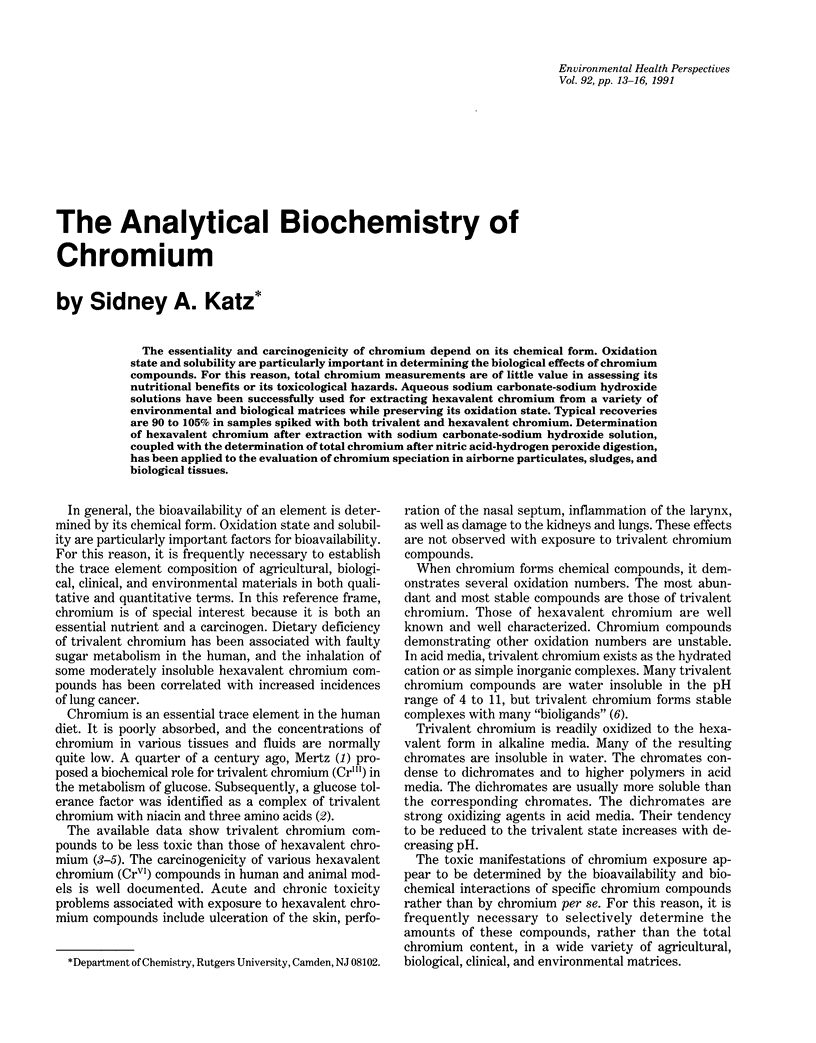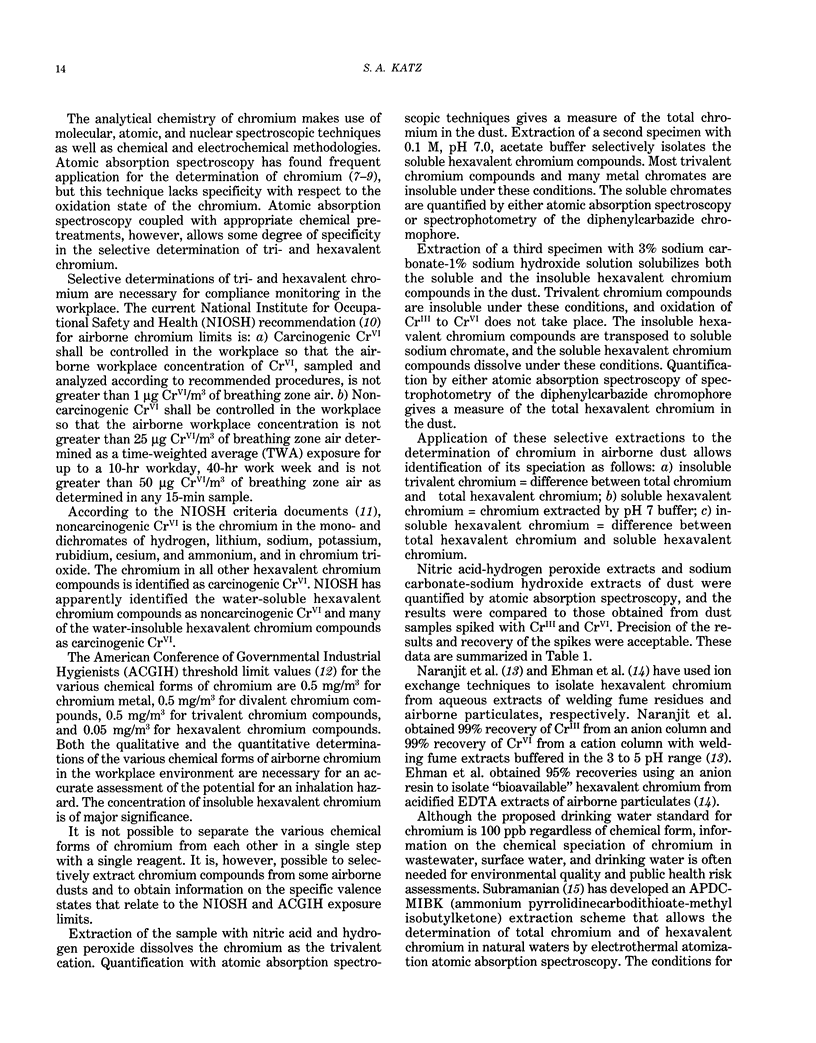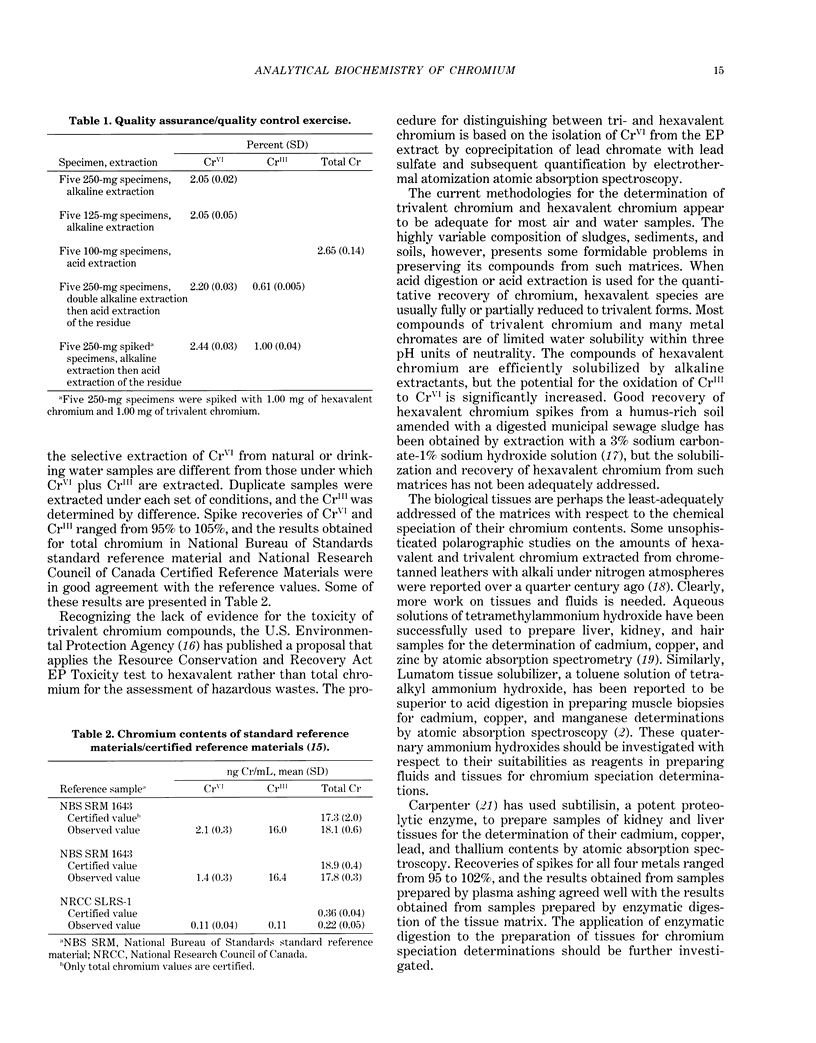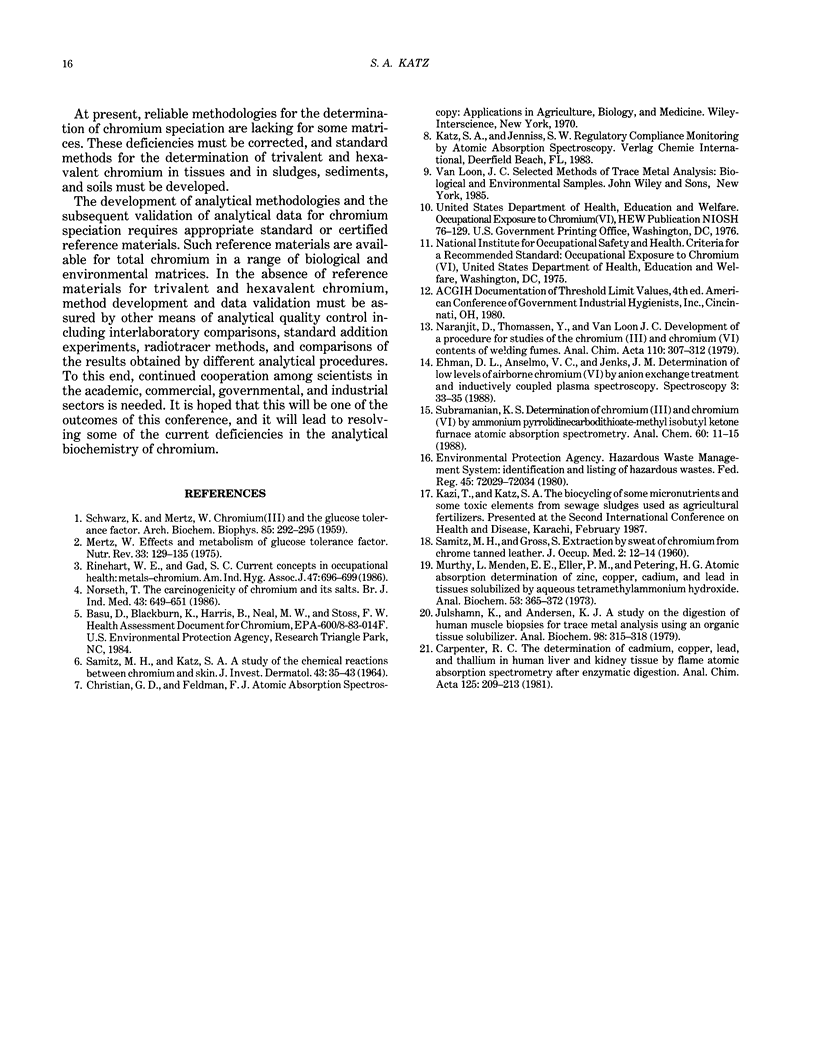Abstract
The essentiality and carcinogenicity of chromium depend on its chemical form. Oxidation state and solubility are particularly important in determining the biological effects of chromium compounds. For this reason, total chromium measurements are of little value in assessing its nutritional benefits or its toxicological hazards. Aqueous sodium carbonate-sodium hydroxide solutions have been successfully used for extracting hexavalent chromium from a variety of environmental and biological matrices while preserving its oxidation state. Typical recoveries are 90 to 105% in samples spiked with both trivalent and hexavalent chromium. Determination of hexavalent chromium after extraction with sodium carbonate-sodium hydroxide solution, coupled with the determination of total chromium after nitric acid-hydrogen peroxide digestion, has been applied to the evaluation of chromium speciation in airborne particulates, sludges, and biological tissues.
Full text
PDF



Selected References
These references are in PubMed. This may not be the complete list of references from this article.
- Julshamn K., Andersen K. J. A study on the digestion of human muscle biopsies for trace metal analysis using an organic tissue solubilizer. Anal Biochem. 1979 Oct 1;98(2):315–318. doi: 10.1016/0003-2697(79)90147-7. [DOI] [PubMed] [Google Scholar]
- Mertz W. Effects and metabolism of glucose tolerance factor. Nutr Rev. 1975 May;33(5):129–135. doi: 10.1111/j.1753-4887.1975.tb07105.x. [DOI] [PubMed] [Google Scholar]
- Murthy L., Menden E. E., Eller P. M., Petering H. G. Atomic absorption determination of zinc, copper, cadmium, and lead in tissues solubilized by aqueous tetramethylammonium hydroxide. Anal Biochem. 1973 Jun;53(2):365–372. doi: 10.1016/0003-2697(73)90082-1. [DOI] [PubMed] [Google Scholar]
- Norseth T. The carcinogenicity of chromium and its salts. Br J Ind Med. 1986 Oct;43(10):649–651. doi: 10.1136/oem.43.10.649. [DOI] [PMC free article] [PubMed] [Google Scholar]
- Rinehart W. E., Gad S. C. Current concepts in occupational health: metals-chromium. Am Ind Hyg Assoc J. 1986 Nov;47(11):696–699. doi: 10.1080/15298668691390494. [DOI] [PubMed] [Google Scholar]
- SAMITZ M. H., GROSS S. Extraction by sweat of chromium from chrome tanned leathers. J Occup Med. 1960 Jan;2:12–14. [PubMed] [Google Scholar]
- SAMITZ M. H., KATZ S. A STUDY OF THE CHEMICAL REACTIONS BETWEEN CHROMIUM AND SKIN. J Invest Dermatol. 1964 Jul;42:35–43. [PubMed] [Google Scholar]
- SCHWARZ K., MERTZ W. Chromium(III) and the glucose tolerance factor. Arch Biochem Biophys. 1959 Nov;85:292–295. doi: 10.1016/0003-9861(59)90479-5. [DOI] [PubMed] [Google Scholar]
- Subramanian K. S. Determination of chromium(III) and chromium(IV) by ammonium pyrrolidinecarbodithioate-methyl isobutyl ketone furnace atomic absorption spectrometry. Anal Chem. 1988 Jan 1;60(1):11–15. doi: 10.1021/ac00152a004. [DOI] [PubMed] [Google Scholar]


